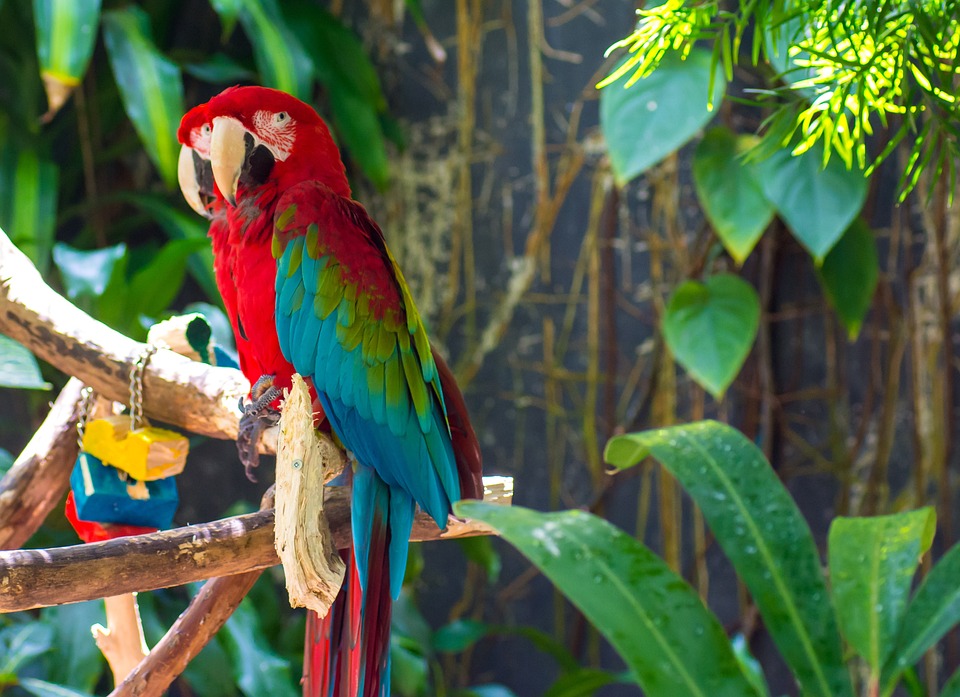Creating a consistent daily routine is crucial for the well-being and behavior of your parrot. In this article, we will explore the importance of establishing a routine for your feathered friend and provide expert tips on how to do so effectively. Additionally, we will address some frequently asked questions to help you better understand your parrot’s needs.
Understanding the Significance of a Daily Routine
A. Benefits of a daily routine for parrots
Establishing a daily routine for your parrot offers numerous benefits. It provides them with a sense of security and predictability, reducing stress and anxiety. A routine also helps prevent boredom, which can lead to destructive behaviors such as feather picking or excessive screaming.
B. The impact of routine on parrot behavior
A consistent routine promotes positive behavior in parrots. They learn what to expect and become more cooperative and less prone to aggression. A routine also helps establish boundaries and reinforces desirable behaviors, making training easier.
C. How a routine promotes mental and physical health
A well-designed routine ensures that your parrot receives proper nutrition, exercise, mental stimulation, and rest. This promotes optimal physical and mental health, preventing health issues and promoting longevity.
Designing an Effective Routine
A. Setting a consistent schedule for feeding times
1. Understanding parrot dietary needs
Consult with an avian veterinarian to determine the appropriate diet for your parrot. Ensure their diet includes a variety of fresh fruits, vegetables, seeds, and pellets.
2. Establishing regular meal times
Set consistent meal times, ideally twice a day, to maintain a healthy eating routine for your parrot. Avoid free-feeding, as it can lead to obesity.
3. Incorporating foraging activities for mental stimulation
Parrots are intelligent and curious creatures. Incorporate foraging activities, such as hiding food in toys or puzzles, to keep them mentally stimulated during mealtime.
B. Providing structured playtime and exercise
1. Importance of physical activity for parrots
Parrots need regular exercise to maintain muscle strength and prevent obesity. Offer them opportunities to fly or climb, either inside or outside of their cage.
2. Engaging your parrot in interactive play
Interact with your parrot through games, such as teaching them tricks or playing with toys. This strengthens your bond and provides mental stimulation.
3. Incorporating toys and games into the routine
Rotate toys regularly to keep your parrot engaged and prevent boredom. Offer a variety of toys, including puzzles, chew toys, and foraging toys, to keep their minds active.
C. Allocating time for socialization and bonding
1. The significance of social interaction for parrots
Parrots are social creatures and thrive on interaction. Allocate time each day to socialize with your parrot, providing companionship and mental stimulation.
2. Creating opportunities for interaction with the family
Include your parrot in family activities to foster a sense of belonging and prevent feelings of isolation. Allow supervised interactions with family members, ensuring everyone respects the parrot’s boundaries.
3. Encouraging positive reinforcement and rewards
Use positive reinforcement, such as treats and praise, to reward your parrot for good behavior. This encourages desirable behavior and strengthens the bond between you and your feathered friend.
D. Ensuring ample rest and sleep
1. Understanding parrot sleep patterns
Parrots require 10-12 hours of uninterrupted sleep each night. They are sensitive to light and noise, so creating a peaceful sleep environment is crucial.
2. Creating a peaceful sleep environment
Place your parrot’s cage in a quiet, dimly lit area away from disturbances. Cover the cage partially or fully to create a sense of security.
3. Establishing a consistent bedtime routine
Establish a consistent routine that signals bedtime for your parrot. This could include turning off lights, covering the cage, and providing a quiet environment.
Frequently Asked Questions (FAQs)
Q1. How long should my parrot’s daily routine be?
The length of the routine depends on your parrot’s individual needs. Generally, a routine should include a few hours of socialization, playtime, and exercise, along with sufficient rest and sleep.
Q2. What if my parrot resists following the routine?
Introduce the routine gradually and be patient. Positive reinforcement and rewards can help motivate your parrot to follow the routine. Seek guidance from an avian behaviorist if you encounter difficulties.
Q3. Can I deviate from the routine occasionally?
While it’s important to maintain consistency, occasional deviations are acceptable. Life events or special circumstances may require adjustments, but try to return to the routine as soon as possible.
Q4. Are there any specific activities to include in the routine for parrot enrichment?
Incorporate activities that stimulate your parrot’s natural behaviors, such as foraging, flying, climbing, and problem-solving. Rotate toys and introduce new ones regularly to keep them engaged.
Q5. How long does it take for a parrot to adjust to a new routine?
The time it takes for a parrot to adjust to a new routine varies. Some parrots adapt quickly, while others may take several weeks. Be patient and consistent, and observe your parrot’s behavior for signs of adjustment.
Conclusion
Establishing a daily routine for your parrot plays a vital role in maintaining their overall well-being and promoting desirable behavior. By carefully designing a routine that incorporates regular feeding, playtime, socialization, and rest, you can provide your parrot with the stability and mental stimulation they need. Remember, consistency and patience are key when implementing a new routine, and always be attuned to your parrot’s individual preferences and needs.









